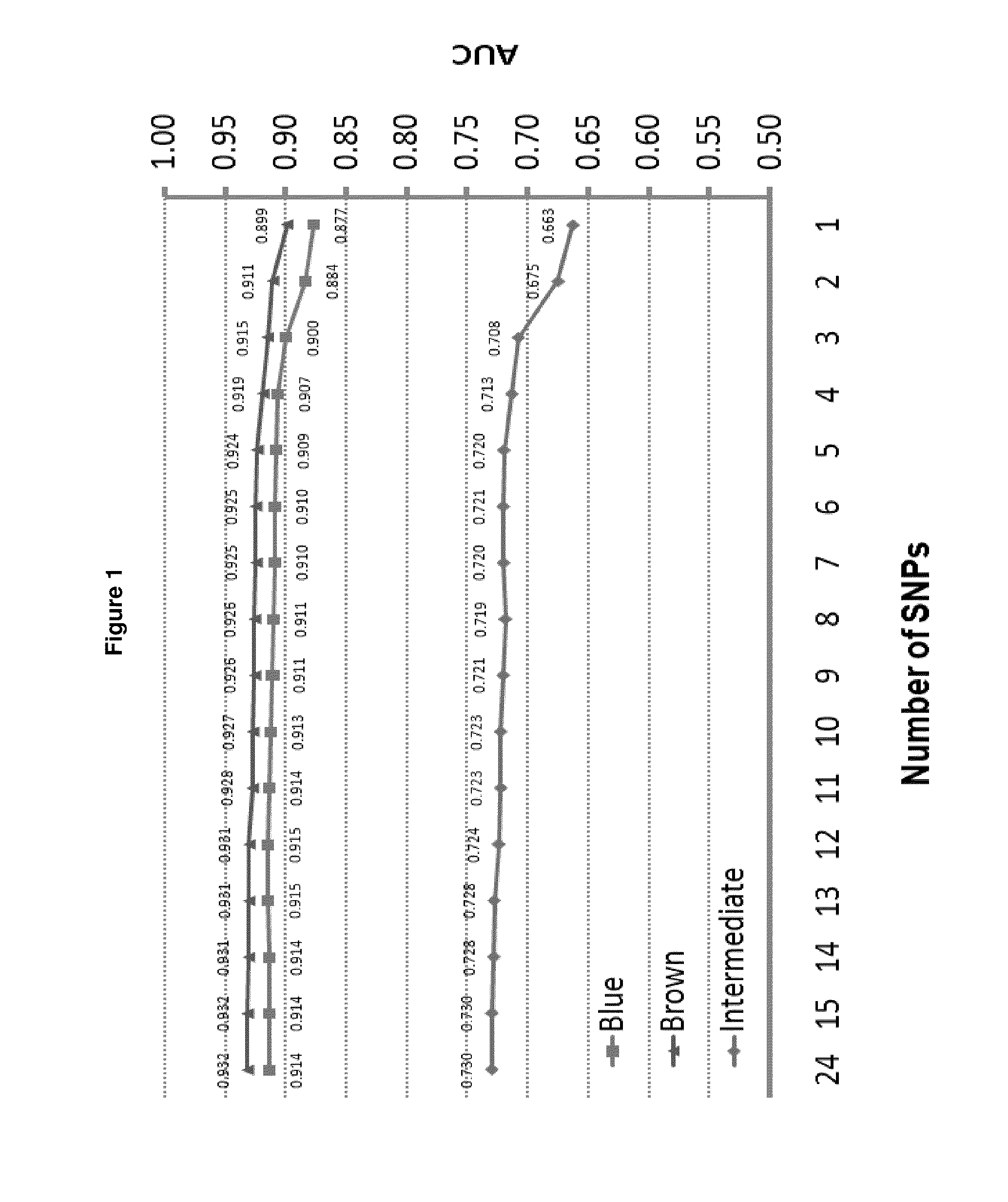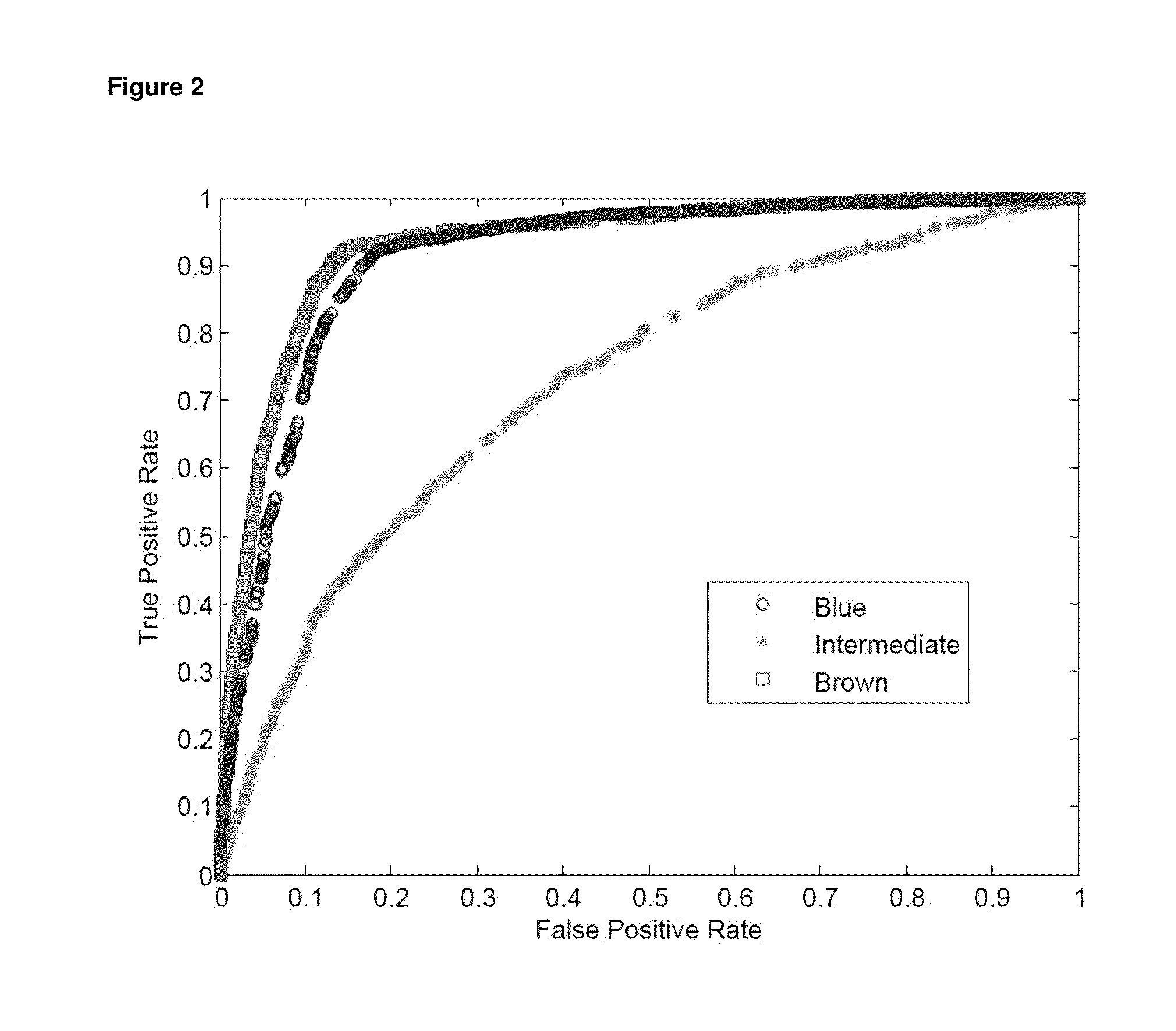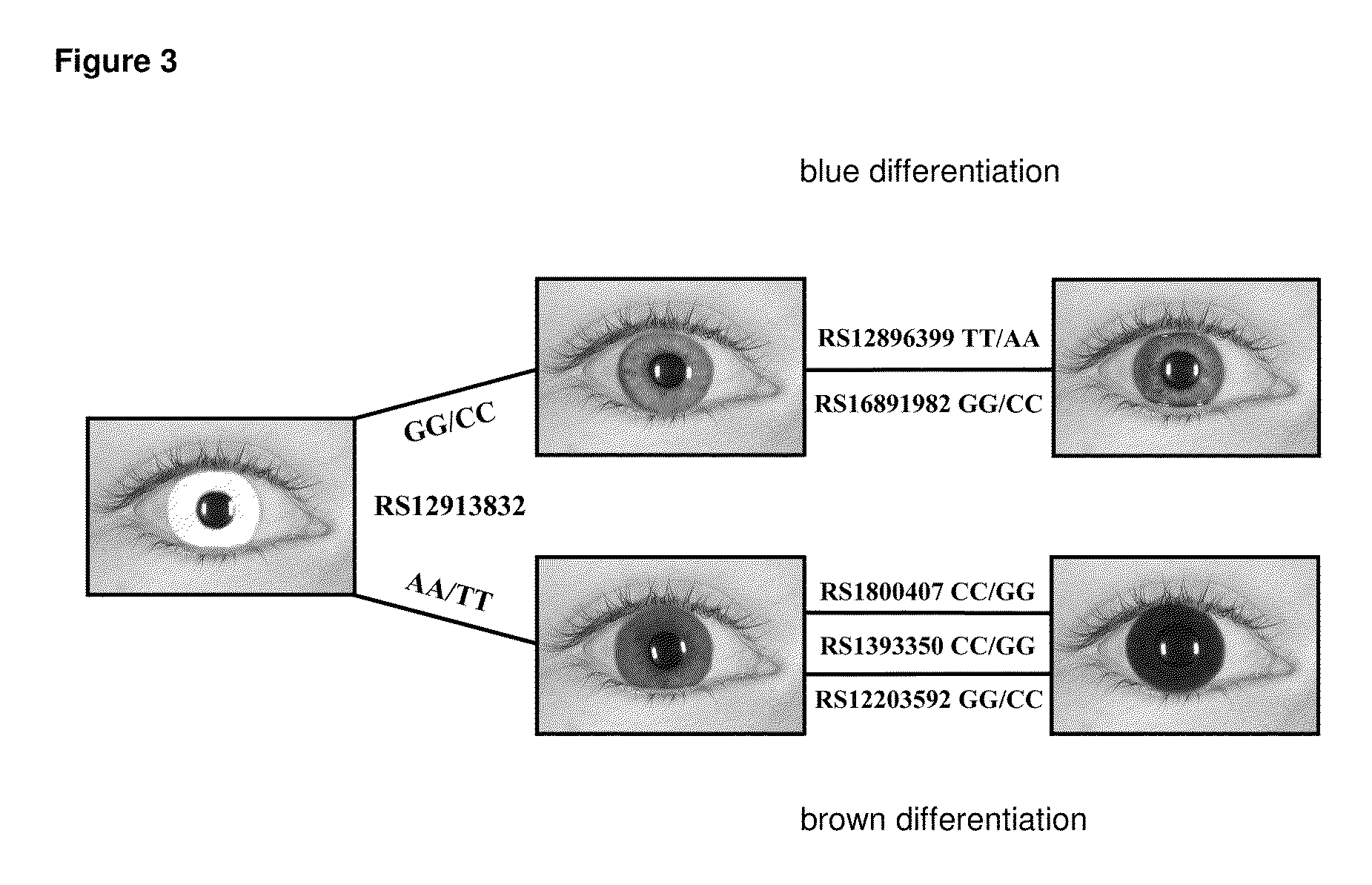Method for prediction of human iris color
a polygenic trait and human iris color technology, applied in chemical libraries, combinational chemistry, sugar derivatives, etc., can solve the problems of no relatives can be identified, no dna profile is available for comparison, and no person who left the sample at the crime scene can be identified using genetic eviden
- Summary
- Abstract
- Description
- Claims
- Application Information
AI Technical Summary
Problems solved by technology
Method used
Image
Examples
example 1
Eye Color and the Prediction of Complex Phenotypes from Genotypes
[0162]Predicting complex human phenotypes from genotypes has recently gained tremendous interest in the emerging field of consumer genomics, particularly in light of attempting personalized medicine [1, 2]. So far however, this approach was never shown to be accurate, even in combination with non-DNA-based information, thereby limiting practical applications [3, 4]. Here, we used human eye (iris) color of Europeans as an empirical example to demonstrate that accurate genetic prediction of complex human phenotypes is feasible. Moreover, the six DNA markers we identified as major eye color predictors will be valuable in forensic studies.
[0163]Facilitated by recent genome-wide genotyping, single nucleotide polymorphisms (SNPs) in various genes have been identified to be unambiguously associated with human eye color variation in Europeans [5-7], affirming eye color as a genetically complex phenotype. Thus, eye color may be...
example 2
IrisPlex™—a Sensitive DNA Tool for Accurate Prediction of Blue and Brown Eye Color in the Absence of Ancestry Information
Abstract
[0220]A new era of ‘DNA intelligence’ is arriving in forensic biology, due to the impending ability to predict externally visible characteristics (EVCs) from biological material such as those found at crime scenes. EVC prediction from forensic samples, or from body parts, is expected to help concentrate police investigations towards finding unknown individuals, at times when conventional DNA profiling fails to provide informative leads. Here we present a robust and sensitive tool, termed IrisPlex™, for the accurate prediction of blue and brown eye color from DNA in future forensic applications. We used the 6 currently most eye color informative single nucleotide polymorphisms (SNPs) that previously revealed prevalence-adjusted prediction accuracies of over 90% for blue and brown eye color in 6168 Dutch Europeans. The single multiplex assay, based on SNaPsh...
example 3
Developmental Validation of the IrisPlex™ System
[0276]Developmental validation of the genotyping assay described in Example 2 has been conducted following the Scientific Working Group on DNA Analysis Methods (SWGDAM) guidelines for the application of DNA-based eye color prediction to forensic casework. This work is described in Walsh et al (2010) Forensic Sci Int: Genetics published online 12 Oct. 2010 (herein incorporated by reference in its entirety). The optimised assay conditions are described below.
Multiplex Design & Protocol
[0277]The IrisPlex consists of 6 SNPs, rs12913832 (HERC2), rs1800407 (OCA2), rs12896399 (SLC24A4), rs16891982 (SLC45A2 (MATP)), rs1393350 (TYR) and rs12203592 (IRF4). PCR primers are as described in Example 2 and Table 9. SBE primer sequences and features, including slight alterations to the previously published sequences and features described in Example 2 are provided in Table 13. The protocol consists of a single multiplex two step PCR using 1 μl genomic...
PUM
| Property | Measurement | Unit |
|---|---|---|
| Temperature | aaaaa | aaaaa |
| Temperature | aaaaa | aaaaa |
| Temperature | aaaaa | aaaaa |
Abstract
Description
Claims
Application Information
 Login to View More
Login to View More - R&D
- Intellectual Property
- Life Sciences
- Materials
- Tech Scout
- Unparalleled Data Quality
- Higher Quality Content
- 60% Fewer Hallucinations
Browse by: Latest US Patents, China's latest patents, Technical Efficacy Thesaurus, Application Domain, Technology Topic, Popular Technical Reports.
© 2025 PatSnap. All rights reserved.Legal|Privacy policy|Modern Slavery Act Transparency Statement|Sitemap|About US| Contact US: help@patsnap.com



